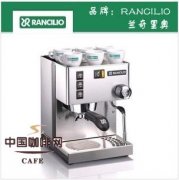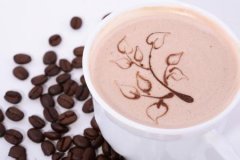Coffee beans are also divided into "aristocratic and poor classes". Evaluation of the quality of coffee

Quality Evaluation of Coffee
Coffee producing countries have their own grading methods and quality evaluation criteria in order to grade their harvested coffee, of course, there are also famous coffee mochas. Like Yemen in Matali, there are no countries with uniform export specifications and no coffee culture of the same style. If the common evaluation criteria of coffee producing countries around the world, it would be much more convenient for buyers, but unfortunately, the current classification criteria are still based on the national conditions of each producing country. As for supply and demand, it depends on the market situation and degree of coffee chain stores.
Having said that, we can still roughly distinguish according to the following three points.
(1) grading according to the altitude of the place of origin
(2) grading according to the sieve (size of raw beans)
(3) grading according to the proportion of screen and defective beans.
1. The quality is evaluated by the altitude of the producing area.
Generally speaking, the quality of high real estate coffee is better than that of low real estate, so the height of producing area is also included in one of the quality evaluation criteria. The higher the altitude, the lower the relative temperature, the coffee fruit can slowly mature, so that fully ripe beans have good expansibility. As a result, coffee-producing countries in Central America evaluate the quality of coffee beans almost exclusively by the altitude of their origin. This is the most basic knowledge of coffee.
For example, coffee from Guatemala, the highest quality coffee in the country, is called SHB, an acronym for StrictlyHard Bean, and is grown at an altitude of more than 1350 meters. The highest quality SHG (Strictly HighGrown) species in Mexico
Planted in the highlands above 1700 meters above sea level. SHG in El Salvador and Honduras is also grown in highlands above 1200 meters above sea level.
The main cultivation areas of coffee in Central American countries are the slopes of the hills. Planted in that place, ripe and red fruits can only be picked carefully by hand. Although the cost is high, magazines and defective beans can be produced.
High-quality coffee.
2. Evaluate the quality by screen.
Countries that use sieves to evaluate quality include Kenya, Tanzania, Colombia and other Colombian producers of fresh and bright coffee (one of the types of coffee traded on the New York Futures Exchange based on origin). The so-called judging quality according to the screen means to evaluate the quality according to the size of raw beans. For all kinds of raw beans, the size of the beans is determined by a perforated iron plate screen.
The size of the hole in the sieve is 1 canopy 64 inches, so the 17 sieve refers to 17 canopy 64 inches, which means that the raw bean can pass through the sieve with a hole size of 6.75 mm.
The most advanced coffee beans in Tanzania are large granulated beans called AA, which need a sieve of more than 18 (7.14mm). AA in Kenya also uses large granular beans with holes above 7.2mm. Colombia has a special grade.
(Supremo) and upper selection (Excelso) two grades, the special grade needs more than 17 sieve, and the upper selection requires sieve 14 + 16 (refers to 11% of sieve 14 beans mixed with sieve 16).
3. Evaluate the quality according to the screen and the proportion of defective beans.
Brazil, a big coffee country, uses the proportion of defective beans (deduction method), sieve mesh, and taste test to synthesize three grading methods to derive the third evaluation method.
For example, when buying Brazilian coffee beans, you will see the sign "Brazil Santos NO.2, sieve 19, extremely mild (Strictly Soft)", which states as follows:
Brazil-producing country
Santos (Santos)-export port
NO.2---- represents the grading of the number of defective beans mixed in, NO.2 is the highest grade, and NO.8 is the lowest limit of output sales specifications.
Sieve No. 19-indicates the size of beans. In Brazil, 12-20 means that the larger the number, the larger the granules. This classification is limited to flat beans. Round beans should be graded with a special oval mesh (8-13).
Extremely mild (Strictly Soft)-represents the grading of Cup Testing, and extremely mild means the highest level.
Brazil's three-stage grading method has not been adopted in other countries.
P.S.: in addition to the three classifications mentioned above, some areas, like Jamaica, use cultivated land classification.
Important Notice :
前街咖啡 FrontStreet Coffee has moved to new addredd:
FrontStreet Coffee Address: 315,Donghua East Road,GuangZhou
Tel:020 38364473
- Prev

What kind of coffee machine should beginners buy?
If you want to buy a coffee maker for a few hundred yuan, I suggest you buy a siphon pot. The siphon pot is a classic in coffee. You can also buy Belgian pots or mocha pots or hand pots. Each kind of coffee brewed from the pot has its own unique taste. If you want to buy a 1K coffee maker, I advise you not to be impulsive for the sake of being cheap. It is recommended that you buy a 4K-8K home semi-automatic.
- Next

The Origin and Culture of Bali Coffee
When I came to Bali to buy a lot of things, I will write about them one by one. The first thing worth mentioning is the coffee in Bali. Generally speaking, Indonesia coffee has the taste of earth and traditional Chinese medicine, and its consistency is among the highest in all continents. At that time, we went to the Golden Rabbit Gold Coffee Factory near Kimbalan, which was a big sign when we first entered the door, and then someone specialized.
Related
- Detailed explanation of Jadeite planting Land in Panamanian Jadeite Manor introduction to the grading system of Jadeite competitive bidding, Red bid, Green bid and Rose Summer
- Story of Coffee planting in Brenka region of Costa Rica Stonehenge Manor anaerobic heavy honey treatment of flavor mouth
- What's on the barrel of Blue Mountain Coffee beans?
- Can American coffee also pull flowers? How to use hot American style to pull out a good-looking pattern?
- Can you make a cold extract with coffee beans? What is the right proportion for cold-extracted coffee formula?
- Indonesian PWN Gold Mandrine Coffee Origin Features Flavor How to Chong? Mandolin coffee is American.
- A brief introduction to the flavor characteristics of Brazilian yellow bourbon coffee beans
- What is the effect of different water quality on the flavor of cold-extracted coffee? What kind of water is best for brewing coffee?
- Why do you think of Rose Summer whenever you mention Panamanian coffee?
- Introduction to the characteristics of authentic blue mountain coffee bean producing areas? What is the CIB Coffee Authority in Jamaica?

